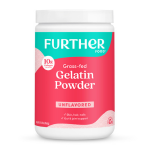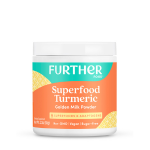We are all programmed to like sugar. New research shows some of us are genetically much more prone to sugar and food addiction than others. I have observed this in my patients, but now it is becoming clear why some have more trouble kicking the sugar habit than others.
Science clearly demonstrates that people can be biologically addicted to sugar in the same way they can be addicted to heroin, cocaine or nicotine. Bingeing and addictive behaviors are eerily similar in alcoholics and sugar addicts. In fact, most recovering alcoholics often switch to another easily available drug: Sugar.
How Does Sugar Addition Work? In our Brain with Pleasure Sensors!
In our brain, a little receptor - the dopamine receptor D2 (or DRD2 for short) - must be activated or switched on for us to feel pleasure. The amino acid dopamine triggers this response. Sugar and other stimulating addictions increase dopamine in the short term.
The only problem is it appears that those with sugar addictions, compulsive eating, and obesity have DRD2 systems that need much more stimulation to feel pleasure. Those who have sugar addiction it seems, have fewer D2 dopamine receptors and they need extra stimulation to make them “turn on.”
Functional MRI studies of teenagers, both lean and obese, found that the obese teenagers whose brains didn’t light up as much in the dopamine reward centers were more likely to be obese as well as to gain weight later in life. They also were more likely to have the DRD2 gene that coded for fewer receptors, thereby needing more sugar to feel stimulation.
Some studies have pointed to drugs or nutrients that can modulate this defective dopamine reward response. In one study, naltrexone, an opioid blocker (which blocks the effects of heroin and morphine on the brain) was used in sugar addicts. When they took this drug, which prevented them from getting the temporary high from sugar, they craved less and ate less.
 So How Can You Overcome Your Brain’s Wiring to Break Your Addiction to Sugar?
Despite being stuck with the sugar addiction low pleasure gene, you may be able to modify its activity by modulating your brain chemistry and receptor function with the use of specific nutrients that either improve gene expression, or modify the activity, the enzymes, or the receptors, even if they are somewhat impaired.
For those with personal struggles with food addiction, remember it is not a moral failing or lack of willpower. Here are five suggestions to help break food addictions:
1. Balance your blood sugar: Research studies say that low blood sugar levels are associated with lower overall blood flow to the brain, which means more bad decisions. To keep your blood sugar stable:
So How Can You Overcome Your Brain’s Wiring to Break Your Addiction to Sugar?
Despite being stuck with the sugar addiction low pleasure gene, you may be able to modify its activity by modulating your brain chemistry and receptor function with the use of specific nutrients that either improve gene expression, or modify the activity, the enzymes, or the receptors, even if they are somewhat impaired.
For those with personal struggles with food addiction, remember it is not a moral failing or lack of willpower. Here are five suggestions to help break food addictions:
1. Balance your blood sugar: Research studies say that low blood sugar levels are associated with lower overall blood flow to the brain, which means more bad decisions. To keep your blood sugar stable:
- Eat a nutritious breakfast with some protein like eggs, protein shakes, or nut butters. Studies repeatedly show that eating a healthy breakfast helps people maintain weight loss.
- Also, have smaller meals throughout the day. Eat every 3-4 hours and have some protein with each snack or meal (lean animal protein, nuts, seeds, beans).
- Avoid eating 3 hours before bedtime.
2. Eliminate sugar and artificial sweeteners and your cravings will go away: Go cold turkey. If you are addicted to narcotics or alcohol, you can’t simply just cut down. You have to stop for your brain to reset. In the same way, you need to eliminate all refined sugars, sodas, fruit juices, and artificial sweeteners from your diet. These are all drugs that will fuel cravings. Go on a sugar detox and just say no to sugar.
3. Determine if hidden food allergies are triggering your cravings. We often crave the very foods that we have a hidden allergy to. For a simple allergy elimination program, consider trying The UltraSimple Diet, or TheUltraSimple Diet Challenge Home Study Coaching Program.
4. Get 7-8 hours of sleep. Research shows that lack of sleep increases cravings.
5. Optimize your nutrient status with supplements that can help reduce cravings:
- Optimize your Vitamin D level. According to one study, when Vitamin D levels are low, the hormone that helps turn off your appetite doesn’t work and people feel hungry all the time, no matter how much they eat.
-
Optimize omega-3s. Low levels of omega three fatty acids are involved in normal brain cell function, insulin control and inflammation.
- And last, consider taking natural supplements for craving control. Glutamine, tyrosine, 5-HTP, collagen protein are amino acids that help reduce cravings. Stress reducing herbs such as Rhodiola can help. Chromium balances blood sugar and can help take the edge off cravings. Glucomannan fiber is very helpful in reducing the spikes in sugar and insulin that drive cravings and hunger.
Implementing the above suggestions could be the solution you are looking for to end food addiction struggles and balance your sugar level.
The Further Food 10-Day Restart: Sugar Detox Plan can help you cut out sugar for good. You'll get an E-book with more than 30 sugar-free recipes, meal plan, shopping list AND daily e-mails from Sugar Detox Experts with tips on how to beat cravings, sugar-free snacks and lots more. Learn more
here.
 Want to read more?
5 Surprising Reasons Why Sugar is Making You Age Faster!
Just Diagnosed with Fatty Liver? Dr. Hyman Says Sugar, Not Fat, is Your Enemy!
Success Story: I Went on a Sugar Detox and Lost 50 lbs and Got Off Painkillers!
Take the Sugar Pledge and Join Our Free Sugar Detox Challenge!
Want to read more?
5 Surprising Reasons Why Sugar is Making You Age Faster!
Just Diagnosed with Fatty Liver? Dr. Hyman Says Sugar, Not Fat, is Your Enemy!
Success Story: I Went on a Sugar Detox and Lost 50 lbs and Got Off Painkillers!
Take the Sugar Pledge and Join Our Free Sugar Detox Challenge!
 So How Can You Overcome Your Brain’s Wiring to Break Your Addiction to Sugar?
Despite being stuck with the sugar addiction low pleasure gene, you may be able to modify its activity by modulating your brain chemistry and receptor function with the use of specific nutrients that either improve gene expression, or modify the activity, the enzymes, or the receptors, even if they are somewhat impaired.
For those with personal struggles with food addiction, remember it is not a moral failing or lack of willpower. Here are five suggestions to help break food addictions:
1. Balance your blood sugar: Research studies say that low blood sugar levels are associated with lower overall blood flow to the brain, which means more bad decisions. To keep your blood sugar stable:
So How Can You Overcome Your Brain’s Wiring to Break Your Addiction to Sugar?
Despite being stuck with the sugar addiction low pleasure gene, you may be able to modify its activity by modulating your brain chemistry and receptor function with the use of specific nutrients that either improve gene expression, or modify the activity, the enzymes, or the receptors, even if they are somewhat impaired.
For those with personal struggles with food addiction, remember it is not a moral failing or lack of willpower. Here are five suggestions to help break food addictions:
1. Balance your blood sugar: Research studies say that low blood sugar levels are associated with lower overall blood flow to the brain, which means more bad decisions. To keep your blood sugar stable:
 Want to read more?
5 Surprising Reasons Why Sugar is Making You Age Faster!
Just Diagnosed with Fatty Liver? Dr. Hyman Says Sugar, Not Fat, is Your Enemy!
Success Story: I Went on a Sugar Detox and Lost 50 lbs and Got Off Painkillers!
Take the Sugar Pledge and Join Our Free Sugar Detox Challenge!
Want to read more?
5 Surprising Reasons Why Sugar is Making You Age Faster!
Just Diagnosed with Fatty Liver? Dr. Hyman Says Sugar, Not Fat, is Your Enemy!
Success Story: I Went on a Sugar Detox and Lost 50 lbs and Got Off Painkillers!
Take the Sugar Pledge and Join Our Free Sugar Detox Challenge!
























